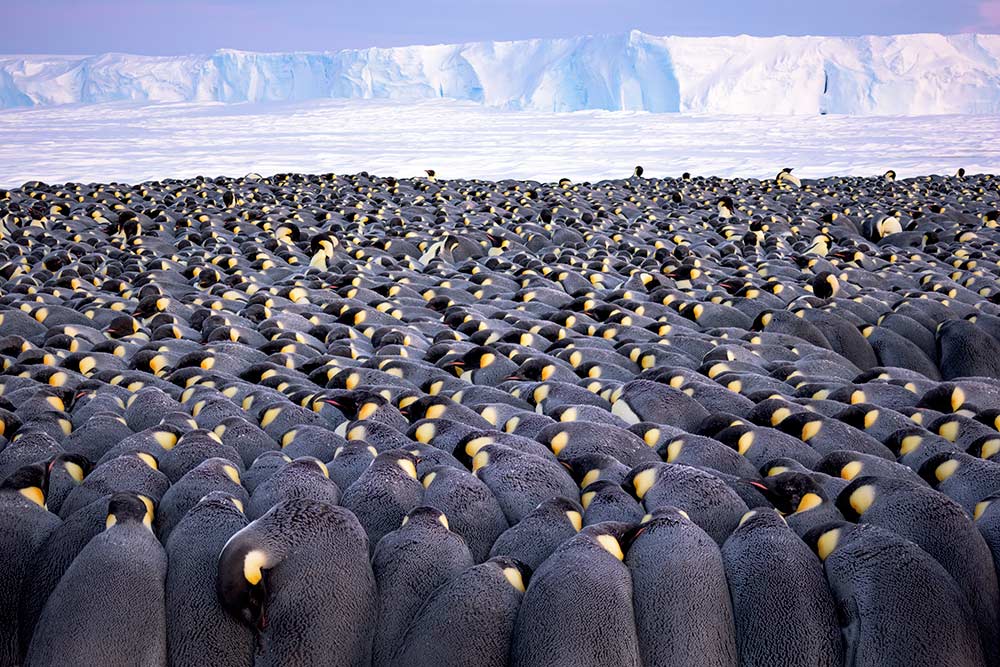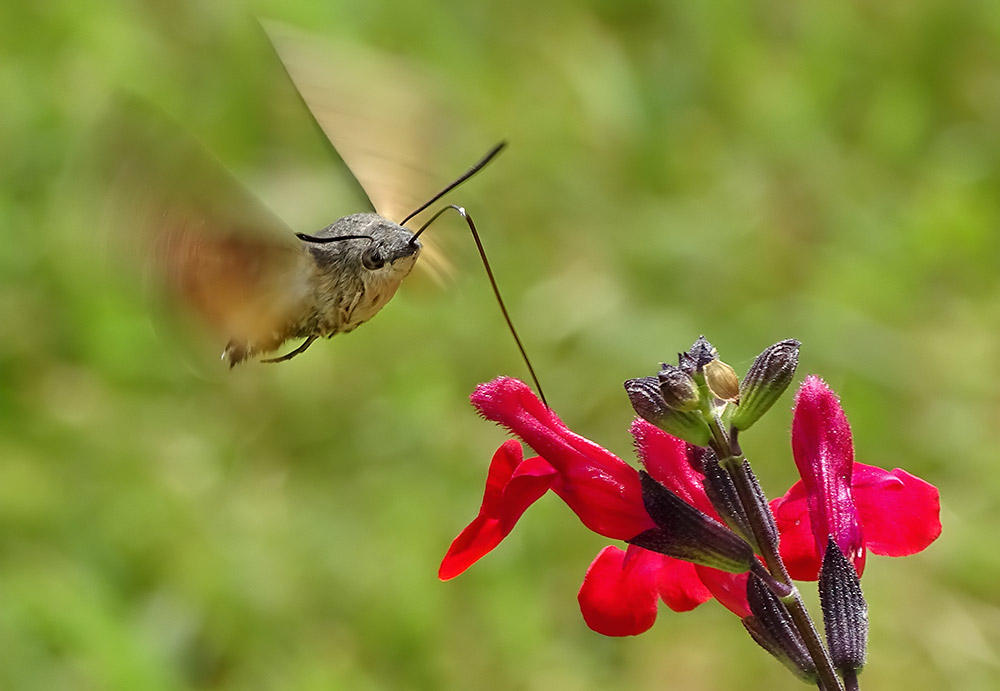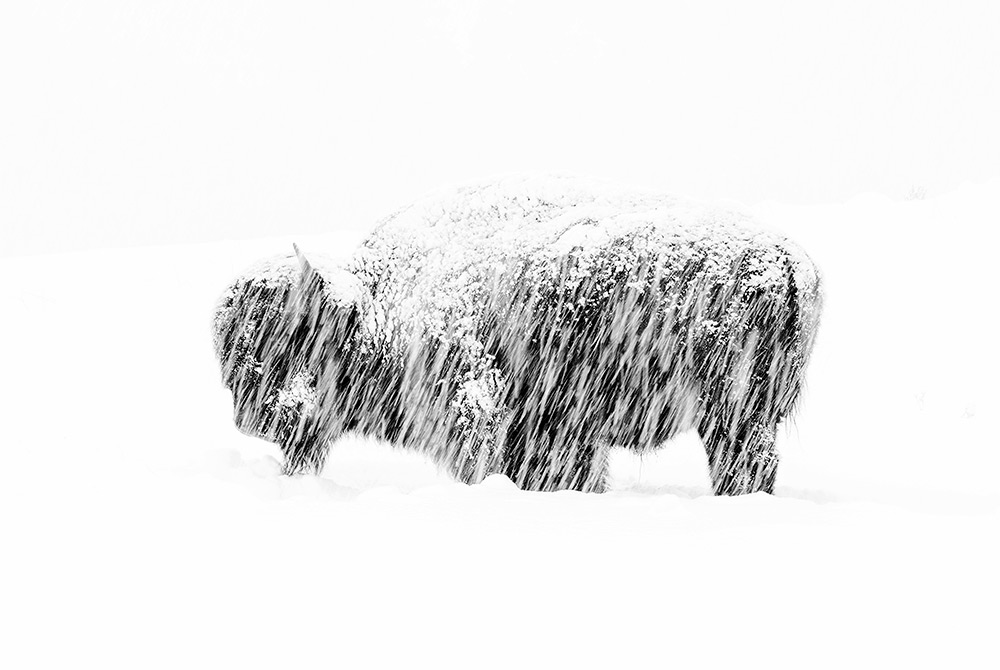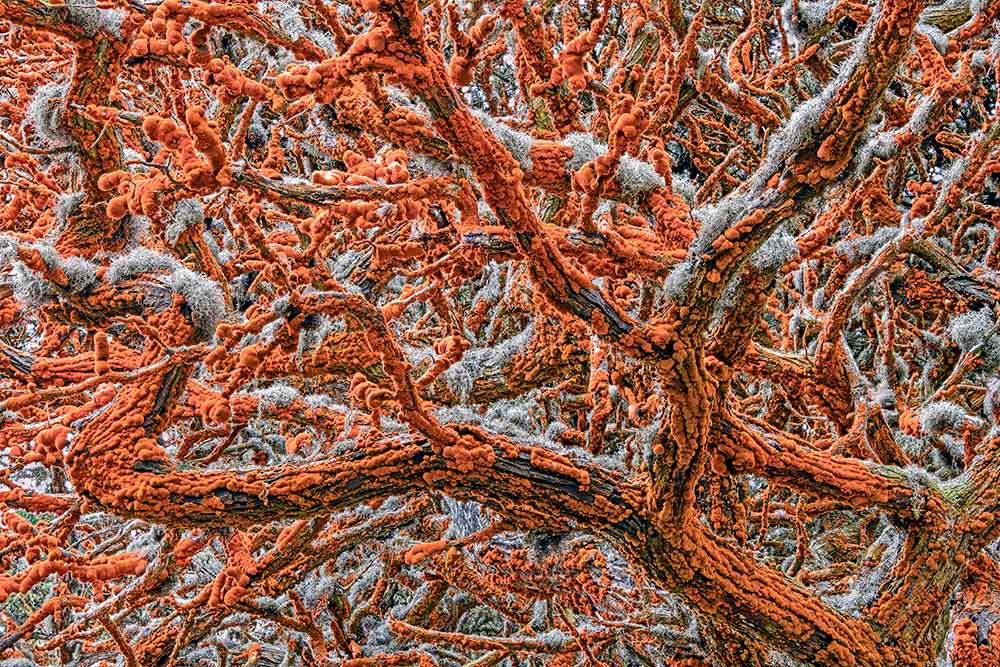 | « Back to article | Print this article |
Wheeling round, a look of utter shock on its face, a marmot jumps in fright after a young fox sneaks up behind it.
The split-second encounter between prey and predator -- called the Moment -- has won the man who captured it the title of Wildlife Photographer of the Year.
He was chosen from a longlist of various category winners, all of whom managed to record the oddities, rivalries and beauty of the natural world.
Scroll down for some of the winners.
(Please click on the image for a full-screen resolution)

It was early spring on the alpine meadowland of the Qinghai–Tibet Plateau, in China’s Qilian Mountains National Nature Reserve, and very cold. The marmot was hungry. It was still in its winter coat and not long out of its six-month, winter hibernation, spent deep underground with the rest of its colony of 30 or so. It had spotted the fox an hour earlier, and sounded the alarm to warn its companions to get back underground. But the fox itself hadn’t reacted, and was still in the same position. So the marmot had ventured out of its burrow again to search for plants to graze on. The fox continued to lie still. Then suddenly she rushed forward. And with lightning reactions, Yongqing seized his shot. The intensity of life and death was written on their faces -- the predator mid-move, her long canines revealed, and the terrified prey, forepaw outstretched, with long claws adapted for digging, not fighting. Photograph: Yongqing Bao/Wildlife Photographer of the Year

High on a ledge, on the coast near his home in northern Norway, Audun carefully positioned an old tree branch that he hoped would make a perfect golden eagle lookout. To this he bolted a tripod head with a camera, flashes and motion sensor attached, and built himself a hide a short distance away. From time to time, he left road kill carrion nearby. Very gradually -- over the next three years -- a golden eagle got used to the camera and started to use the branch regularly to survey the coast below. Audun’s painstaking work captures the eagle’s power as it comes in to land, talons outstretched, poised for a commanding view of its coastal realm. Photograph: Audun Rikardsen/Wildlife Photographer of the Year

Under a luminous star-studded Arizona sky, an enormous image of a male jaguar is projected onto a section of the US-Mexico border fence -- symbolic, says Alejandro, of ‘the jaguars’ past and future existence in the United States’. Today, the jaguar’s stronghold is in the Amazon, but historically, the range of this large, powerful cat included the southwestern US. Over the past century, human impact – from hunting, which was banned in 1997 when jaguars became a protected species, and habitat destruction -- has resulted in the species becoming virtually extinct in the US. The photograph that Alejandro projected is of a Mexican jaguar, captured with camera traps he has been setting on both sides of the border and monitoring for more than two years. The shot of the border fence was created to highlight President Trump’s plan to seal off the entire US‑Mexico frontier with an impenetrable wall and the impact it will have on the movement of wildlife, sealing the end of jaguars in the US. Photograph: Alejandro Prieto/Wildlife Photographer of the Year

On Pearl Street, in New York’s Lower Manhattan, brown rats scamper between their home under a tree grille and a pile of garbage bags full of food waste. Today, urban rat populations are rising fast. The rodents are well suited for city living -- powerful swimmers, burrowers and jumpers, with great balance, aided by their maligned long tails. They are smart – capable of navigating complex networks such as sewers. Lighting his shot to blend with the glow of the street lights and operating his kit remotely, Charlie realised this intimate street-level view. Photograph: Charlie Hamilton James/Wildlife Photographer of the Year

Fur flies as the puma launches her attack on the guanaco. For Ingo, the picture marked the culmination of seven months tracking wild pumas on foot, enduring extreme cold and biting winds in the Torres del Paine region of Patagonia, Chile. The female was Ingo’s main subject and was used to his presence. But to record an attack, he had to be facing both prey and puma. When the puma was within about 10 metres (30 feet), she sprinted and jumped. Photograph: Ingo Arndt/Wildlife Photographer of the Year

Riccardo could not believe his luck when, at first light, this female gelada, with a week-old infant clinging to her belly, climbed over the cliff edge close to where he was perched. He was with his father and a friend on the high plateau in Ethiopia’s Simien Mountains National Park, there to watch geladas – a grass eating primate found only on the Ethiopian Plateau. Photograph: Riccardo Marchgiani/Wildlife Photographer of the Year

More than 5,000 male emperor penguins huddle against the wind and late winter cold on the sea ice of Antarctica’s AtkaBay, in front of the Ekström Ice Shelf. It was a calm day, but when Stefan took off his glove to delicately focus the tilt-shift lens, the cold ‘felt like needles in my fingertips’. The birds snuggle together, backs to the wind and heads down, sharing their body heat. Those on the windward edge peel off and shuffle down the flanks of the huddle to reach the more sheltered side, creating a constant procession through the warm centre, with the whole huddle gradually shifting downwind. Photograph: Stefan Christmann/Wildlife Photographer of the Year

It may look like an ant, but then count its legs -- and note those palps either side of the folded fangs. Ripan was photographing a red weaver ant colony in the subtropical forest of India’s Buxa Tiger Reserve, in West Bengal, when he spotted the odd looking ant. On a close look, he realised it was a tiny, ant-mimicking crab spider, just 5 millimetres (1/5 inch) long. Many spider species imitate ants in appearance and behaviour -- even smell. Infiltrating an ant colony can help a spider wanting to eat ants or to avoid being eaten by them or by predators that dislike ants. This particular spider seemed to be hunting. Photograph: Ripan Biswas/Wildlife Photographer of the Year

On holiday with his family in France, Thomas was eating supper in the garden on a warm summer’s evening when he heard the humming. The sound was coming from the fast-beating wings of a hummingbird hawkmoth, hovering in front of an autumn sage, siphoning up nectar with its long proboscis. Its wings are reputed to beat faster than the hummingbirds that pollinate the plant in its native home of Mexico and Texas. With the moth moving quickly from flower to flower it was a challenge to frame a picture. But Thomas managed it, while capturing the stillness of the moth’s head against the blur of its wings. Photograph: Thomas Easterbrook/Wildlife Photographer of the Year

For the past 17 years Riku, a Japanese macaque legally captured from the wild, has performed comedy skits three times a day in front of large audiences at the Nikkō Saru Gundan theatre north of Tokyo. These highly popular shows, which attract both locals and tourists, derive from Sarumawashi (translated as ‘monkey dancing’) – a traditional Japanese performance art that has been around for more than 1,000 years. The appeal of these contemporary performances lies in the anthropomorphic appearance of the trained macaques -- invariably dressed in costumes -- that move around the stage on two legs performing tricks and engaging in ridiculous role-plays with their human trainers. Photograph: Jasper Doest/Wildlife Photographer of the Year

In a winter whiteout in YellowstoneNational Park, a lone American bison stands weathering the silent snow storm. Shooting from his vehicle, Max could only just make out its figure on the hillside. Bison survive in Yellowstone’s harsh winter months by feeding on grasses and sedges beneath the snow. Swinging their huge heads from side to side, using powerful neck muscles -- visible as their distinctive humps -- they sweep aside the snow to get to the forage below. Photograph: Max Waugh/Wildlife Photographer of the Year

Festooned with bulging orange velvet, trimmed with grey lace, the arms of a Monterey cypress tree weave an otherworldly canopy over Pinnacle Point, in Point Lobos State Natural Reserve, California, USA. This tiny, protected coastal zone is the only place in the world where natural conditions combine to conjure this magical scene. Though the Monterey cypress is widely planted (valued for its resistance to wind, salt, drought and pests), it is native only on the Californian coast in just two groves. Its spongy orange cladding is in fact a mass of green algae spectacularly coloured by carotenoid pigments, which depend on the tree for physical support but photosynthesize their own food. Photograph: Zorica Kovacevic/Wildlife Photographer of the Year



